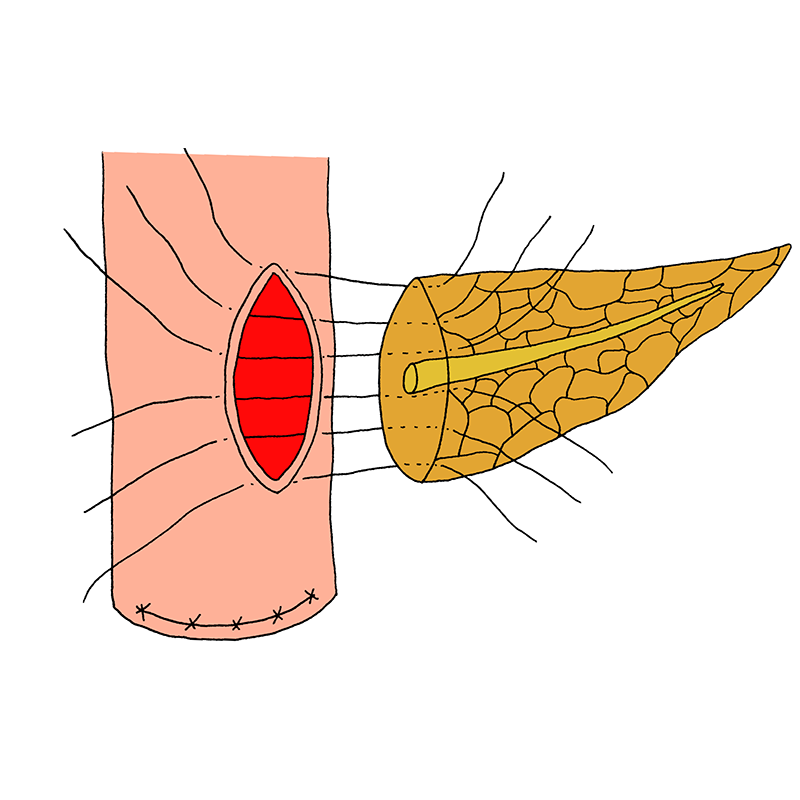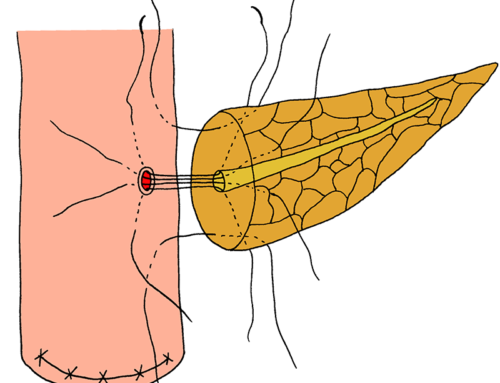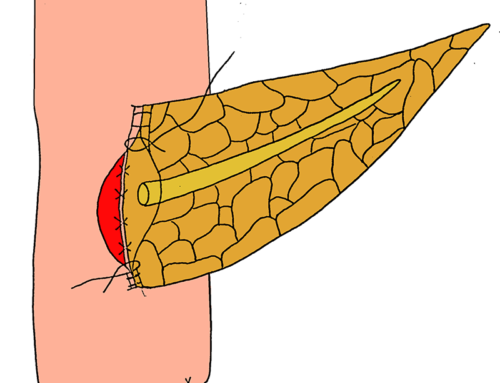An opening is made in the jejunal wall, with a diameter that matches the diameter of the pancreatic stump. Starting at the anterior side of the pancreas, 6-8 sutures are placed one by one, penetrating the full-thickness of the pancreatic parenchyma and exiting the pancreas posteriorly.
Penetrating-suture one-layered end-to-side pancreatojejunostomy
- An opening is made in the jejunal wall, with a diameter that matches the diameter of the pancreatic stump.
- Starting at the anterior side of the pancreas, 6-8 sutures are placed one by one, penetrating the full-thickness of the pancreatic parenchyma and exiting the pancreas posteriorly.
- The sutures are then passed through the entire posterior wall of the jejunum, from outside to inside the jejunal lumen, and back to outside through the anterior wall of the bowel loop. The first and last stitches are placed next to both corners of the new-formed opening.
- In case the pancreas is too thick to penetrate the complete pancreatic parenchyma at once, the sutures can be placed within two steps: after inserting the needle from anterior, the needle exits the pancreatic remnant in the middle of the resection plane, then entering the pancreatic parenchyma in the middle again and exiting the pancreas posteriorly.
- The sutures should be placed carefully, to avoid injury to the main pancreatic duct.
- The pancreatic stump and jejunum are brought together by slowly pulling the strains of the sutures and the knots are tied.
- Additional sutures can be placed circumferentially between the pancreatic capsule and the seromuscular coat of the jejunum.
- Chen Y, Zhu X, Huang J, Zhu Y. End-to-Side Penetrating-Suture Pancreaticojejunostomy: A Novel Anastomosis Technique. J Am Coll Surg. 2015;221:e81-e86.





